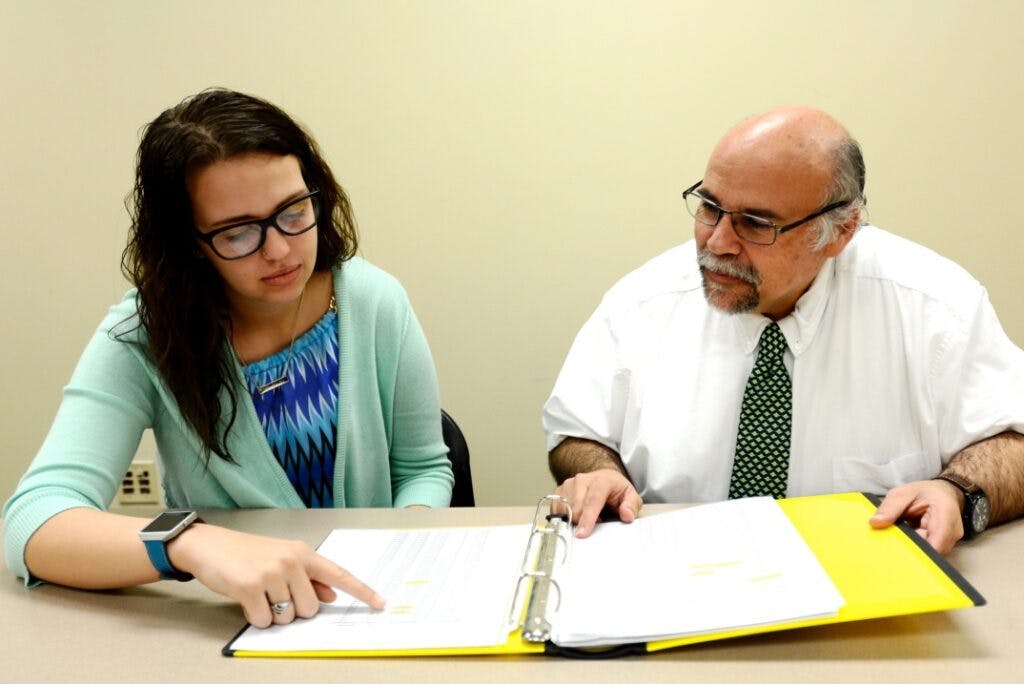Senior Emily Reid Assists Tax Accountant
When Wilmington College professor Allen Beatty faced a dilemma in his private tax accounting business, he knew where to look for competent assistance — his students.
PICTURED: Emily Reid discusses her calculations with Allen Beatty, assistant professor of accounting.
One of Beatty’s clients had acquired stock from a popular restaurant chain through a combination of gifts and inheritances beginning more than a half century ago. Their reinvestment of all dividends yielded additional shares, which were further impacted by 11 stock splits.
The company underwent a corporate buy-out in early 2018 in which all shareholders were forced to sell their shares to the new company. Since his client’s history as an investor with the company goes back to the mid-1960s, some of the shares had an unknown cost basis, according to Beatty.
When he learned that publicly available data only goes back to the mid-1980s, he contacted the corporate office, which was only able to provide him with partial data on scanned, typewritten sheets. Beatty had an idea on how to present the needed information for his client’s tax return, but he knew it would be a cumbersome, time-consuming endeavor.
Enter Emily Reid, a senior from Sidney with a dual major in accounting and agriculture.
“It occurred to me that, maybe as an extra credit project, a student could do this work. Often, when they get in the accounting field, they will be working with massive spreadsheets with similar calculations,” he said, noting he made this opportunity available to all his junior and senior students — “and Emily stepped up to the plate.”
Reid spent “extensive time” expanding on the Excel template Beatty created. Ultimately, the analysis proved inconclusive due to the missing data, yet they created a viable tax document that helped the client.
“Emily, with my guidance, was able to come to a mathematical calculation of the cost basis — an estimate supported by other data — to provide what we feel was a reasonable cost basis and capital gains calculation,” he said. “I incorporated this analysis for my client and completed their tax return.
“They were satisfied with the results.”
